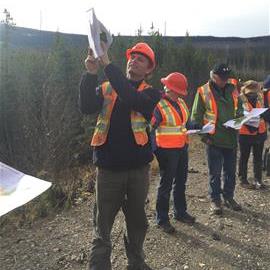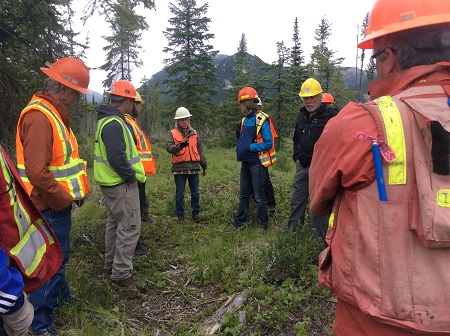Engaging Stakeholders
Canfor and Canfor Pulp work with a wide range of stakeholders. There is significant public involvement in the development of our Sustainable Forest Management Plans and we offer opportunities for public input into our forest management activities.
Our proprietary database, Creating Opportunities for Public Involvement (COPI), tracks communications, actions and issues with stakeholders and other interested parties. It provides both a record of stakeholder contact information and a repository for communications, and can be used to send out information and generate reports. The database includes spatial information that identifies areas of geographic interest and links to overlapping tenure holders such as guide outfitters, trappers and mineral tenure holders.
We rely on staff knowledge, Public Advisory Groups (PAGs) associated with our forest certification program commitments, newspaper advertisements, open houses and presentations to local government, associations or interest groups to develop our list of stakeholders. Staff in all locations meet with local and regional interests and with other forest users so we can be sure their needs and concerns are considered when we are drawing up our management plans.
Since the 1990s, Canfor has been certified to the CSA Z809 standard, which is unique in that it has a specific requirement to engage the public through the use of PAGs. We participate in 11 PAGs across Western Canada. They represent a wide range of interests and come together to discuss current practices, review our sustainable forest management plans, and monitor key indicators.
Members of the PAGs care deeply about their forests. In 2016, 10 of the 11 PAGs joined our employees to tour forest operations to learn more about key topics such as wildfire management, cultural heritage resources, spruce beetle, tree planting, steep-slope logging, and a lot more. This led to constructive and informative dialogue. In July, Grande Prairie hosted a PAG field trip, which included a tour of a mountain pine beetle rehabilitation project. The tour began by bus but participants switched to Canfor trucks when conditions became too rough, and completed the final leg of the trip on foot.

Canfor’s Chris Schacke explaining hydrological recovery to the Prince George Public Advisory Group.
In June, our staff organized a tour to the Flathead River Valley in the southeast corner of BC that strengthened our relationships with environmental organizations and government officials on both sides of the Canada-US border. The 22 participants enjoyed the sharing of best practices and the opportunity to review our results first hand, allowing them to gain confidence in our forestry practices. They were impressed with our consideration of ecological values in our planning, the variation in our retention practices, and our use of temporary roads that were to be deactivated to help maintain wildlife values, and offered suggestions to improve sediment and erosion control and invasive plant management.

Canfor hosted a well-attended tour of the Flathead River Valley. Participants said they learned a lot and gained confidence in our forestry practices.
Canfor Pulp has been active in airshed management since we built our first mills in Prince George in the 1960s, and recently invested $180 million in three significant air quality improvements and they are delivering real, measurable results. Forest research centre FPInnovations worked with Canfor to monitor the city’s air quality before and after the mill upgrades, and found a significant drop in the percentage of time odour is detectable.
Canfor Pulp participated in the World Wildlife Fund’s Environmental Paper Company Index 2015 and will participate again in 2017 to increase our transparency and better understand our opportunities for improving our sustainability performance.